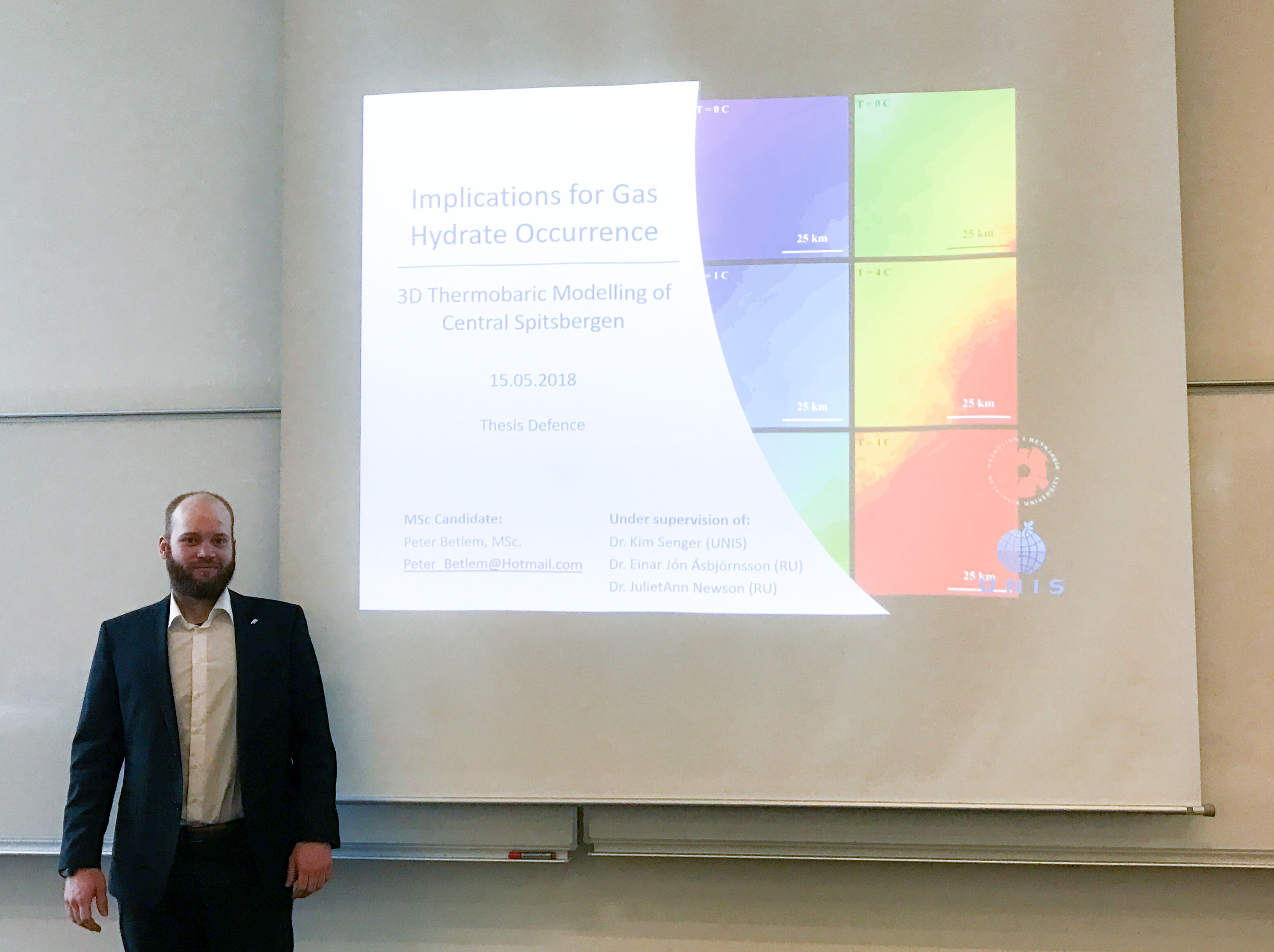MSc Thesis: 3D Thermobaric Modelling of Central Spitsbergen - Implications for Gas Hydrate Occurrence
Peter Betlem successfully defended his master's thesis
REYKJAVIK, June 11 - Last month, MSc in Sustainable Energy, Peter Betlem has successfully defended his master’s thesis project in the 3D thermobaric modelling of Central Spitsbergen and the implications for gas hydrate occurrence. For his project, Peter had the opportunity to collaborate and visit The University Centre in Svalbard (UNIS), located in Longyearbyen, Norway. His work was supervised by Kim Senger from UNIS, and Einar Jón Ásbjörnsson and Juliet Newson from Reykjavik University.

Peter explained that the high arctic has been the main casualty of anthropogenic climate change and is very sensitive to climate change, compared to many places in the world. This forms as the impetus for Peter’s thesis project. Due to the accelerated arctic warming, more permafrost are thawed and this process releases potent greenhouse gases. As a result, there are high concentrations of permafrost carbon pools in the arctic, which contain more amount of methane than many other places.
Peter further explained that gas hydrates are various gas molecules, such as methane, that are surrounded by water molecule cages. Peter concentrated his master thesis on Spitsbergen as there is a high potential for gas hydrates in the onshore central Spitsbergen, Svalbard. Even though the arctic is considered to contain a vast potential of hydrocarbons, the stability of gas hydrates in the permafrost setting is compromised by climate change. Additionally, the release of even a small amount of the permafrost-assiciated hydrates is potentially hazardous. His research is useful because it can be used not only for climate research, but also for renewable energy and sequestration research. During his project, Peter quantified Svalbard’s gas hydrate potential compared to other polar regions, such as Russia, Alaska and Arctic Canada. The outcome of his study is the assessment of the gas hydrate stability zone (GHSZ) for central Spitsbergen.
To do this, peter studied various data, such as the boreholes and geophysical data, chemical analyses, bathymetry, Digital Elevation Models (DEM) and temperature models. Although there are variations in local temperature and pressure, Peter found a strong correlation between GHSZ and base permafrost. On the regional scale, the vertical extent of the GHSZ is most pronounced in areas with thick layers of permafrost, such as the highlands and mountains. On the other hand, the lateral extent of the GHSZ is affected by trends governing surface and subsurface thermobaric conditions. Peter concluded that gas hydrate accumulations are hence, likely to occur within the study area. To read more about Peter’s work, please click on the following link .
Congratulations, Peter on an excellent thesis!
